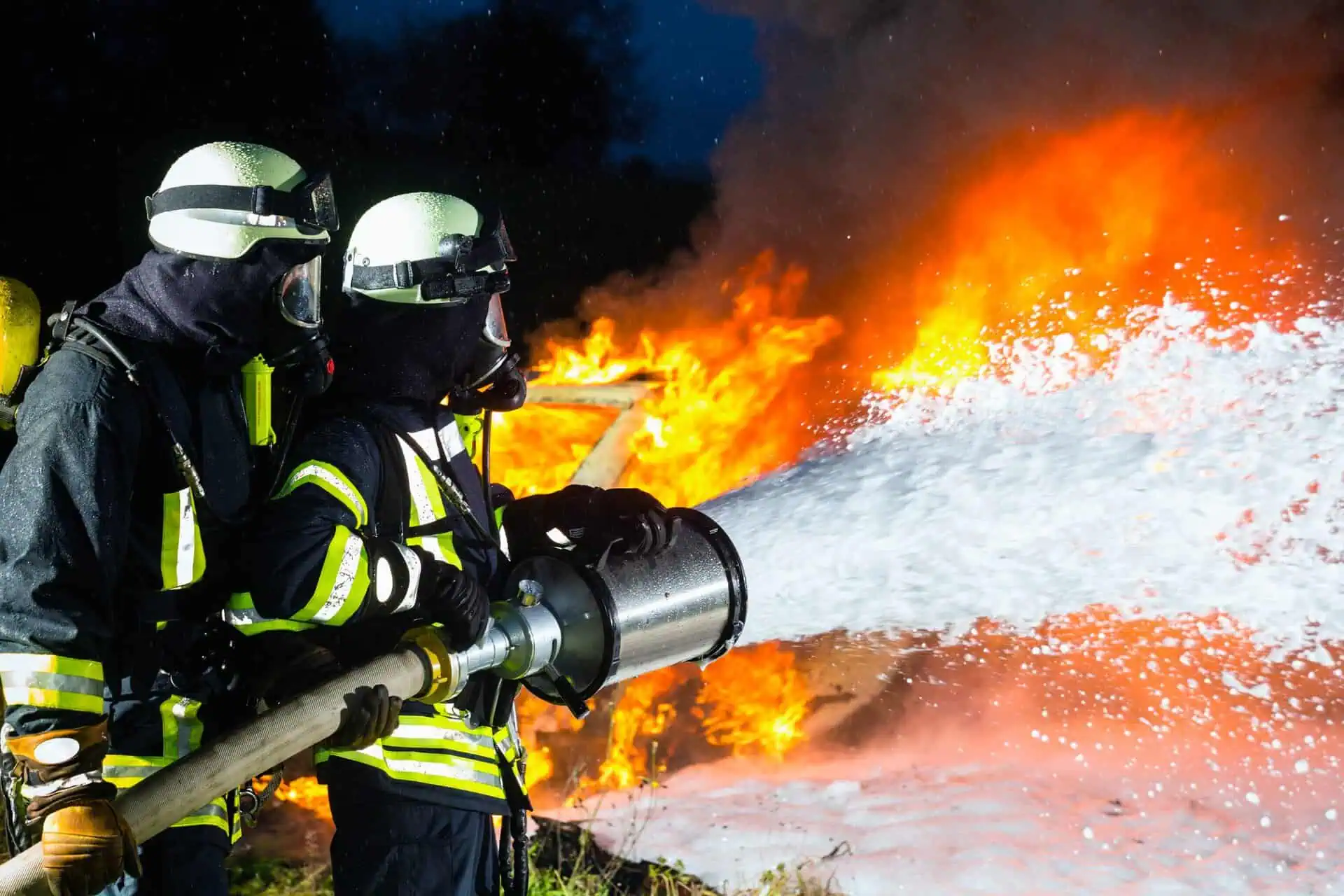Firefighting Foam: Understanding Health Effects on Firefighters
- Last Updated: June 12th, 2025

Attorney Jessica Paluch-Hoerman, founder of TruLaw, has over 28 years of experience as a personal injury and mass tort attorney, and previously worked as an international tax attorney at Deloitte. Jessie collaborates with attorneys nationwide — enabling her to share reliable, up-to-date legal information with our readers.
Legally Reviewed
This article has been written and reviewed for legal accuracy and clarity by the team of writers and legal experts at TruLaw and is as accurate as possible. This content should not be taken as legal advice from an attorney. If you would like to learn more about our owner and experienced injury lawyer, Jessie Paluch, you can do so here.
Fact-Checked
TruLaw does everything possible to make sure the information in this article is up to date and accurate. If you need specific legal advice about your case, contact us by using the chat on the bottom of this page. This article should not be taken as advice from an attorney.
Key takeaways:
- Firefighting foam, is a vital tool in combating fires.
- To ensure the safety and well-being of firefighters, fire chiefs should prioritize the provision of adequate protective gear.
- Governments globally are implementing stricter regulations to mitigate further pollution caused by fluorine-containing substances.
Firefighting Foam: Understanding Health Effects on Firefighters
Firefighters play a crucial role in protecting our communities, but their health can be compromised when they are exposed to firefighting foam chemicals.
These chemicals, particularly fluorinated surfactants, have been found to have detrimental effects on the respiratory system and can lead to long-term health issues.
In fact, studies have shown a connection between these chemicals and certain types of cancer in firefighters, such as bladder, kidney, and testicular cancer.
Additionally, exposure to these chemicals can cause respiratory irritation, resulting in difficulties in breathing, coughing, and wheezing.
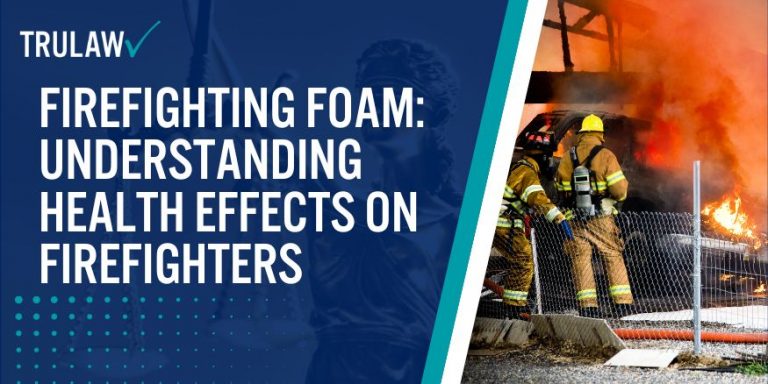
To ensure the safety and well-being of firefighters, fire chiefs should prioritize the provision of adequate protective gear.
This includes not only protective clothing but also respiratory equipment that can minimize exposure to harmful chemicals.
Furthermore, it is crucial to provide comprehensive training on the dangers associated with firefighting foam chemicals.
By educating firefighters about the potential health risks and teaching them proper handling and safety procedures, the likelihood of exposure can be reduced.
Regular health screenings are also essential in protecting firefighters’ health.
By conducting routine check-ups, potential health issues can be detected early on, allowing for prompt treatment and intervention.
These screenings should specifically target the respiratory system and monitor for any signs of respiratory distress or damage.
Table of Contents
Firefighting Foam Functionality: How it Suppresses Fires Effectively
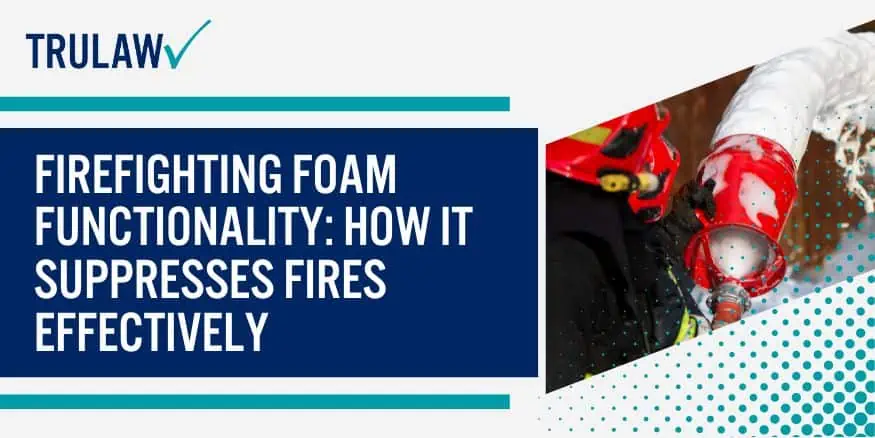
Firefighting foam, is a vital tool in combating fires.
These specialized foam concentrate, made from liquid fuel and surfactants.
Designed to suppress flames by effectively extinguishing fires and preventing re-ignition than using foam blanket.
Let’s delve into the key aspects of how firefighting foam, such as AFFF foam concentrate, works and why it is an essential component in fire suppression and protection.
How Firefighting Foam Cuts Off the Oxygen Supply
Firefighting foam is used to cover the fire and stop it from getting oxygen.
This makes the fire weaker and easier for firefighters to handle.
The foam also has special stuff in it that gives extra protection.
Preventing Re-ignition through Cooling
New firefighting foams put out fires and cool them down as flammable liquid fires.
They have water that absorbs heat from the fire.
This stops the fire from starting again.
The foams are important for Air Force defense and are free.
Creating Barriers against Flammable Vapors
Firefighting foams are essential defense products against liquid fuel fires, so-called fluorine-free foams.
These compounds create a physical barrier on top of fuel surfaces, isolating and containing flammable molecules.
By doing so, they effectively prevent the spread of volatile vapors and minimize the risk of ignition from nearby sources with the high-expansion foam.
Tailored Solutions for Specific Fire Scenarios
Different types of firefighting foams are made to put out different types of fires, like ones with wood or gasoline.
The Air Force uses special foams that work best for each situation, such as extinguishing flammable liquid fires.
Companies that make firefighting foam are always making it better and safer.
They use new ingredients and avoid harmful chemicals like PFOA.
PFAS Contamination Crisis: Impact on Environment and Public Health
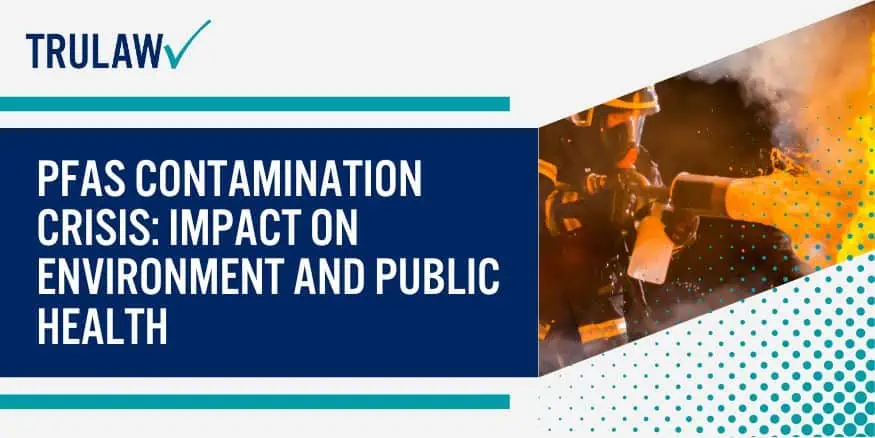
PFAS contamination from firefighting foams containing PFOA and PFOS compounds has emerged as a major global concern.
The widespread use of these harmful chemicals has led to the pollution of water sources worldwide, presenting significant environmental and health hazards for both humans and wildlife.
Exposure to PFAS, specifically PFOA and PFOS, can have detrimental effects on human health, particularly when it comes to drinking water.
These fluoroprotein foam chemicals have been linked to hormone disruption, developmental issues in children, and an increased risk of certain cancers.
The Environmental Protection Agency (EPA) and Fire Fighting Foam Coalition have issued health advisories regarding PFAS exposure due to its potential harm to human health.
The impact of PFAS contamination is not limited to humans alone; wildlife and ecosystems also suffer from its ecological consequences.
Marine life, in particular, is highly vulnerable as PFOA and PFOS chemicals from firefighting foam disrupt the delicate balance of aquatic ecosystems.
Birds, mammals, and fish are all susceptible to the detrimental effects of PFAS chemicals present in their habitats.
Addressing PFAS contamination and cleaning up contaminated water sources come with significant costs.
Government agencies, such as the Air Force, and petroleum facilities responsible for using firefighting foam containing PFAS face substantial expenses in their remediation efforts.
Advanced technologies are required to effectively remove these persistent chemicals from the environment.
The gravity of the situation regarding PFOA and PFOS contamination in drinking water extends beyond isolated cases and affects people worldwide.
As awareness grows about the dangers posed by these harmful chemicals, communities are demanding action from industries that manufacture or use them.
Governments globally are implementing stricter regulations to mitigate further pollution caused by fluorine-containing substances.
In response to the demand for safer alternatives, the market for alternative fire suppression agents is expanding.
Industries are investing in research and development to create effective substitutes that do not pose significant risks to human health or the environment.
Promising advancements in chemical technology are being made to address this pressing concern, with a focus on reducing the use.
The Persistence of Firefighting Foam: Dangers and Long-term Effects
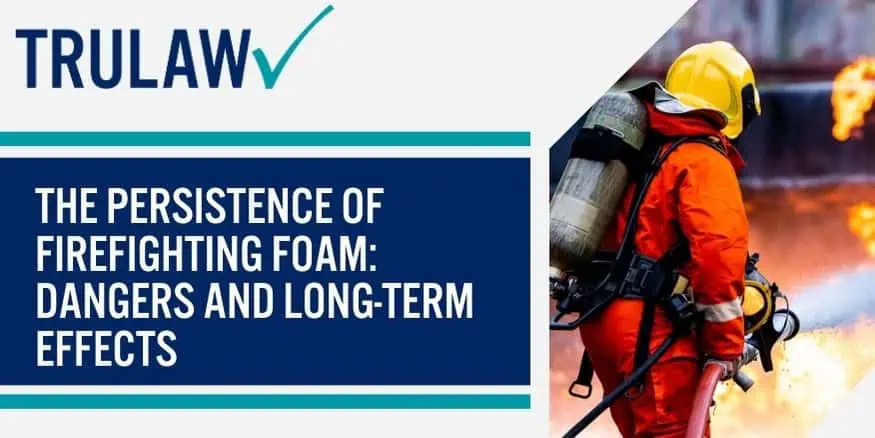
Firefighting foams containing PFAS substances like PFOA and PFOS have proven to be effective in extinguishing fires and handling dangerous situations.
However, the persistence of these chemicals in the environment poses a significant concern for human health.
These foams have the ability to linger in soil, water, and groundwater, leading to contamination that can have long-term consequences.
Research is currently underway to better understand the potential health effects of PFAS chemicals found in firefighting foams.
Early findings indicate that there may be risks associated with exposure, particularly in terms of reproductive health.
Additionally, there have been links between exposure to these foams and developmental disorders.
To prevent further harm, it is crucial to ensure the proper disposal of firefighting foams containing PFAS substances.
This can help minimize the release of these harmful chemicals into the environment and reduce the potential risks to human health.
By implementing appropriate disposal methods, we can work towards safeguarding both our environment and our well-being.
Cancer Risks Associated With Firefighting Foam Chemicals on Firefighters
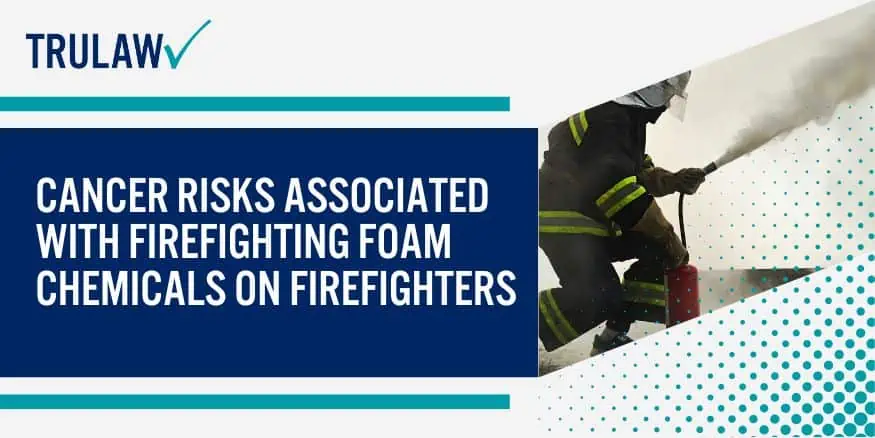
Firefighters are at an increased risk of developing cancer due to exposure to chemicals present in AFFF firefighting foam, such as PFOA and PFOS.
These chemicals have been identified as carcinogens and have been linked to higher cancer rates among firefighters.
It is crucial to raise awareness about these risks and take necessary precautions to protect the health and well-being of firefighters.
Regular check-ups play a vital role in detecting cancer at an early stage.
Firefighters should undergo routine medical examinations to ensure any potential signs of cancer are identified and treated promptly.
Additionally, it is essential to educate firefighters about the dangers associated with exposure to these chemicals and emphasize the importance of using protective gear during firefighting operations.
Fire departments should actively seek safer alternatives to the use of firefighting foam chemicals.
By exploring alternative options, fire departments can minimize the potential health risks faced by firefighters without compromising their ability to combat fires effectively.
Manufacturers of firefighting foam should also prioritize the development and production of safer alternatives, adhering to regulations and guidelines to ensure the safety of firefighters.
Governments play a crucial role in protecting firefighters and communities by implementing strict rules regarding the use and disposal of firefighting foam chemicals.
By enforcing regulations, governments can ensure that these chemicals are handled and disposed of properly, minimizing the risks posed to firefighters and the environment.
Skin Irritation and Dermatological Effects of Firefighting Foam Chemicals
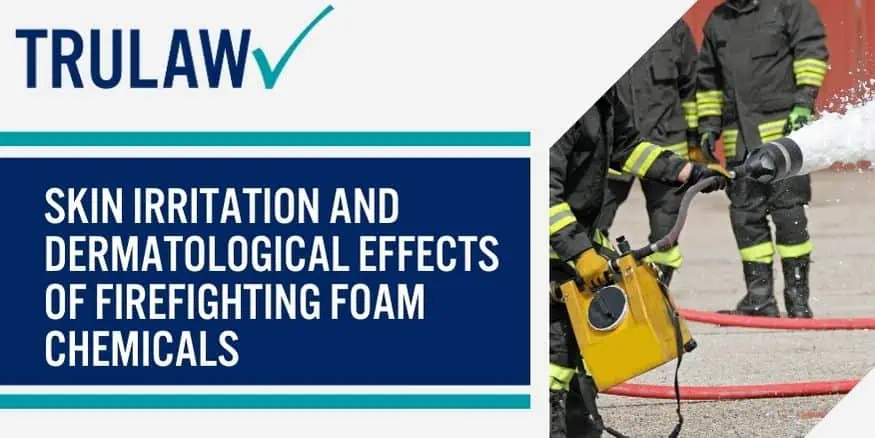
Firefighters face a significant risk of skin damage due to the chemicals present in AFFF firefighting foam.
Prolonged exposure to these chemicals can result in severe conditions such as burns or allergies.
To mitigate this risk, it is crucial for firefighters to adhere to the guidelines set by the Environmental Protection Agency (EPA) for decontamination.
Additionally, they should utilize protective clothing and gloves to minimize direct contact with the foam and its harmful components.
The use of personal protective equipment (PPE) is of utmost importance in ensuring the safety of firefighters and complying with EPA regulations.
PPE, including items such as fire-resistant clothing, gloves, and helmets, acts as a barrier between the skin and the potentially hazardous chemicals in firefighting foam.
By wearing PPE, firefighters can significantly reduce the risk of skin damage and related health issues.
In order to effectively protect the skin health of firefighters, it is essential for fire departments to provide comprehensive training on the proper handling of chemicals and emphasize the importance of using PPE correctly.
This training should cover topics such as the potential risks associated with firefighting foam chemicals, proper decontamination procedures, and the selection and use of appropriate protective gear.
By equipping firefighters with the necessary knowledge and skills, fire departments can ensure that their personnel are well-prepared to safeguard their skin health while performing their duties.
Assessing Effectiveness: Analyzing the Efficiency of Firefighting Foams
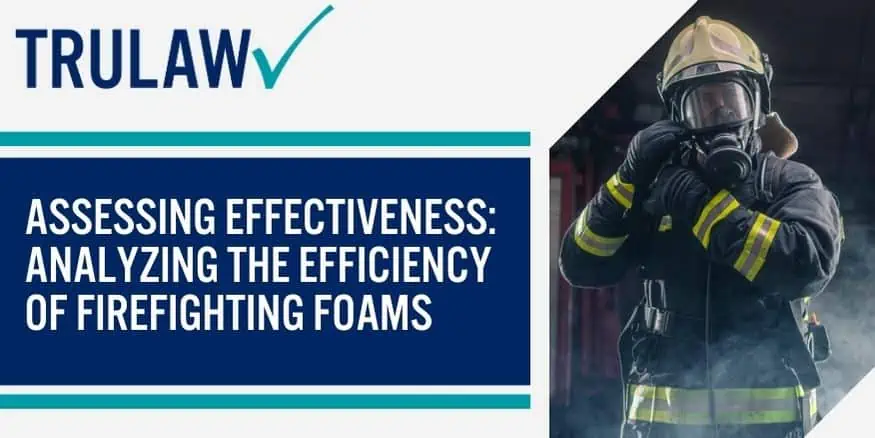
The effectiveness of firefighting foams containing acid PFOS and aqueous film forming foam (AFFF) with fluorine compounds depends on various factors such as concentration, expansion ratio, and application method.
These elements play a crucial role in determining the efficiency of these foams in suppressing fires, while also ensuring compliance with EPA regulations.
Foam concentration is an essential factor to consider when assessing the effectiveness of firefighting foams.
Different foams require specific concentrations to achieve optimal performance.
It is important to follow the recommended concentration guidelines to ensure the foam’s ability to extinguish fires effectively.
The expansion ratio of firefighting foams is another important consideration.
The expansion ratio determines the foam’s ability to cover a larger area and suffocate flames.
Foams with higher expansion ratios can effectively smother fires and prevent their spread, making them more efficient in fire suppression.
Proper application techniques also play a significant role in determining the effectiveness of firefighting foams.
Using nozzles effectively and distributing the foam evenly is crucial for achieving maximum fire suppression results.
These techniques ensure that the foam is applied in the most efficient manner, allowing it to effectively extinguish the fire.
To evaluate the performance of firefighting foams, the EPA conducts various tests under different fire scenarios.
These tests assess the effectiveness of foams containing PFOS and AFFF, particularly those used by the Navy.
Burnback resistance assessments are conducted to determine how well a foam resists reignition after initial extinguishment.
This assessment helps gauge the long-term effectiveness of the foam in preventing fires from rekindling.
Foam quality standards established by the EPA ensure consistent effectiveness across different brands and manufacturers.
These standards outline specific requirements for foam concentration levels, expansion ratios, and burnback resistance capabilities.
Adhering to these standards allows AFFF foam manufacturers to provide reliable and effective products for fire suppression in the Navy and the US.
Environmental Consequences: Exploring the Ecological Impact of PFAS in Firefighting Foam
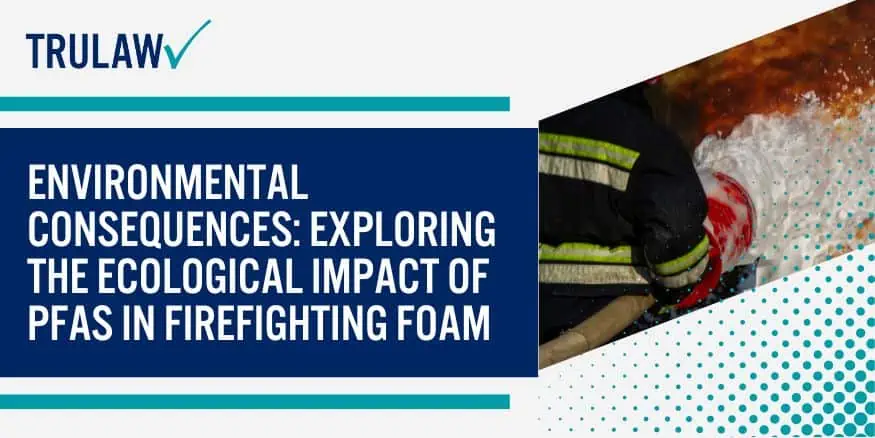
The use of AFFF firefighting foam, particularly in the Navy, has had detrimental effects on the environment due to the presence of PFAS contamination.
These harmful chemicals, which are present in firefighting foam, have the ability to accumulate in wildlife and disrupt ecosystems.
This disruption has a direct impact on aquatic life, as well as larger predators within the food chain.
Additionally, the contamination of PFAS compounds affects plants and animals that rely on the contaminated water for survival.
In order to prevent further damage, it is crucial to minimize the use of AFFF-containing PFAS compounds and to implement containment and remediation strategies.
Ongoing research is currently being conducted to identify environmentally friendly alternatives to chemical foam that can be used in firefighting efforts.
Addressing the Urgency for Safer Alternatives in Fire Suppression
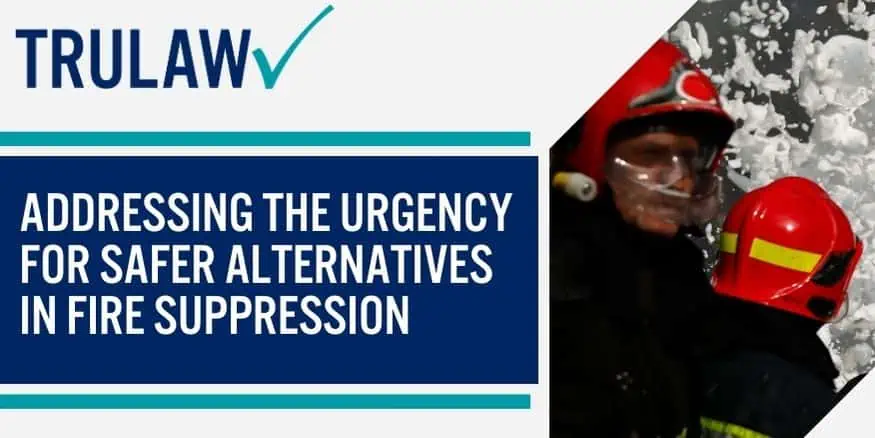
The urgency to find safer alternatives to firefighting foam stems from concerns about the persistence and potential health effects of PFAS chemicals.
Research is currently underway to identify environmentally friendly options, and one promising alternative is fluorine-free foam, also known as AFFF.
This type of foam can effectively combat liquid fires while reducing environmental and health risks.
Fire departments are actively seeking safer alternatives to protect both firefighters and the environment.
Collaboration between industry, regulators, and researchers is crucial in order to develop and implement safer fire suppression technologies.
Finding alternatives to traditional foam is a top priority for fire departments, as the use of traditional foam poses risks during firefighting operations and training exercises.
One of the main concerns driving this urgency is the potential contamination of groundwater caused by PFAS chemicals leaching into water sources.
Transitioning to AFFF can help mitigate these risks.
It is important to consider factors such as fire extinguishment efficiency, compatibility with existing equipment, ease of use, and affordability when evaluating alternative options to ensure that safety levels are maintained.
Overall, the urgency to address the need for safer alternatives in fire suppression is driven by concerns about the persistence and potential health effects of PFAS chemicals.
Collaboration between various stakeholders is essential in order to develop and implement effective and environmentally friendly fire suppression technologies.
Conclusion: Key Takeaways and Future Directions in Firefighting Foam Technology
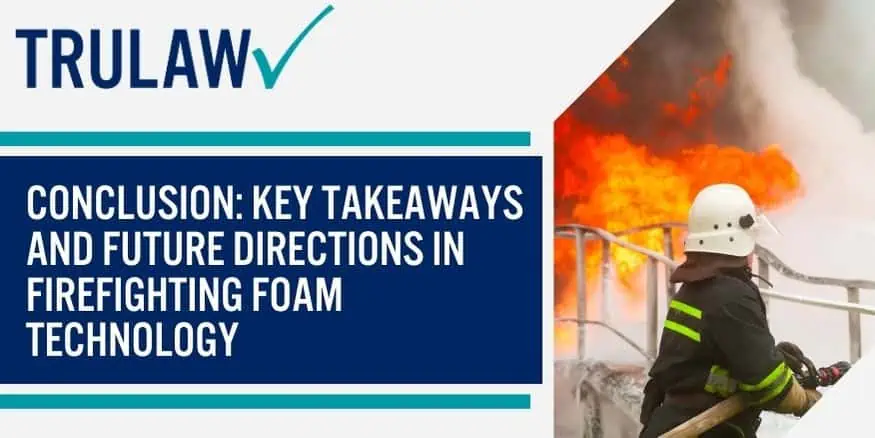
In conclusion, AFFF firefighting foam plays a crucial role in effectively suppressing fires.
It functions by smothering the flames and preventing the release of flammable vapors, thereby rapidly extinguishing the fire.
However, it is important to address the PFAS contamination crisis associated with firefighting foam, specifically AFFF.
The presence of these harmful chemicals, including AFFF, has significant implications for both the environment and public health.
Their persistence in water sources and potential bioaccumulation pose long-term risks that must be mitigated.
Firefighting foam chemicals also pose health hazards to firefighters.
Exposure to these substances increases their risk of developing cancer, while skin irritation and dermatological effects are common among those regularly using firefighting foam.
Efforts should be made to assess the effectiveness of different firefighting foams.
Analyzing their efficiency in suppressing various types of fires can lead to advancements in formulation and application techniques.
Enhancing overall fire suppression capabilities.
Finished foam, maybe with premix solution or protein foam, can be tested with clean water for fire safety in the fire department.
AFFF Lawsuit Frequently Asked Questions
-
How Does Foam Concentration Affect The Effectiveness Of Firefighting Foams?
Foam concentration is a critical factor in determining the efficiency of firefighting foams.
Different foams require specific concentrations to effectively suppress fires.
Following recommended concentration guidelines ensures that the foam has the necessary properties to extinguish fires efficiently and meet regulatory standards.
-
What Role Does The Expansion Ratio Of Firefighting Foams Play In Fire Suppression?
The expansion ratio of firefighting foams is important for their effectiveness in fire suppression.
Foams with higher expansion ratios have the ability to cover a larger area and suffocate flames more effectively.
This property allows them to smother fires and prevent their spread, making foams with higher expansion ratios more efficient in suppressing fires.
-
What Are Some Common Mistakes Made When Applying Firefighting Foams?
There are several common mistakes that can be made when applying firefighting foams, which can impact their efficiency.
One of the most common mistakes is using the wrong type of foam for the fire being fought.
Different types of fires require different types of foams, and using the wrong type can result in the foam being less effective or even completely ineffective.
Another common mistake is not using enough foam.
If the foam is not applied in sufficient quantities, it may not be able to fully extinguish the fire.
-
How Do Proper Application Techniques Impact The Efficiency Of Firefighting Foams?
Proper application techniques play a crucial role in ensuring the effectiveness of firefighting foams.
When applied correctly, firefighting foams can quickly and efficiently extinguish fires, minimizing damage and reducing the risk of injury or loss of life.
However, if the foam is not applied properly, it may not be able to penetrate the fire and extinguish it completely.

Managing Attorney & Owner
With over 25 years of legal experience, Jessica Paluch-Hoerman is an Illinois lawyer, a CPA, and a mother of three. She spent the first decade of her career working as an international tax attorney at Deloitte.
In 2009, Jessie co-founded her own law firm with her husband – which has scaled to over 30 employees since its conception.
In 2016, Jessie founded TruLaw, which allows her to collaborate with attorneys and legal experts across the United States on a daily basis. This hypervaluable network of experts is what enables her to share the most reliable, accurate, and up-to-date legal information with our readers!
Additional AFFF Lawsuit resources on our website:
Here, at TruLaw, we’re committed to helping victims get the justice they deserve.
Alongside our partner law firms, we have successfully collected over $3 Billion in verdicts and settlements on behalf of injured individuals.
Would you like our help?
At TruLaw, we fiercely combat corporations that endanger individuals’ well-being. If you’ve suffered injuries and believe these well-funded entities should be held accountable, we’re here for you.
With TruLaw, you gain access to successful and seasoned lawyers who maximize your chances of success. Our lawyers invest in you—they do not receive a dime until your lawsuit reaches a successful resolution!
AFFF Lawsuit claims are being filed against manufacturers of aqueous film-forming foam (AFFF), commonly used in firefighting.
Claims allege that companies such as 3M, DuPont, and Tyco Fire Products failed to adequately warn users about the potential dangers of AFFF exposure — including increased risks of various cancers and diseases.
Depo Provera Lawsuit claims are being filed by individuals who allege they developed meningioma (a type of brain tumor) after receiving Depo-Provera birth control injections.
A 2024 study found that women using Depo-Provera for at least 1 year are five times more likely to develop meningioma brain tumors compared to those not using the drug.
Suboxone Tooth Decay Lawsuit claims are being filed against Indivior, the manufacturer of Suboxone, a medication used to treat opioid addiction.
Claims allege that Indivior failed to adequately warn users about the potential dangers of severe tooth decay and dental injuries associated with Suboxone’s sublingual film version.
Social Media Harm Lawsuits are being filed against social media companies for allegedly causing mental health issues in children and teens.
Claims allege that companies like Meta, Google, ByteDance, and Snap designed addictive platforms that led to anxiety, depression, and other mental health issues without adequately warning users or parents.
Transvaginal Mesh Lawsuits are being filed against manufacturers of transvaginal mesh products used to treat pelvic organ prolapse (POP) and stress urinary incontinence (SUI).
Claims allege that companies like Ethicon, C.R. Bard, and Boston Scientific failed to adequately warn about potential dangers — including erosion, pain, and infection.
Bair Hugger Warming Blanket Lawsuits involve claims against 3M — alleging their surgical warming blankets caused severe infections and complications (particularly in hip and knee replacement surgeries).
Plaintiffs claim 3M failed to warn about potential risks — despite knowing about increased risk of deep joint infections since 2011.
Baby Formula NEC Lawsuit claims are being filed against manufacturers of cow’s milk-based baby formula products.
Claims allege that companies like Abbott Laboratories (Similac) and Mead Johnson & Company (Enfamil) failed to warn about the increased risk of necrotizing enterocolitis (NEC) in premature infants.
Here, at TruLaw, we’re committed to helping victims get the justice they deserve.
Alongside our partner law firms, we have successfully collected over $3 Billion in verdicts and settlements on behalf of injured individuals.
Would you like our help?
